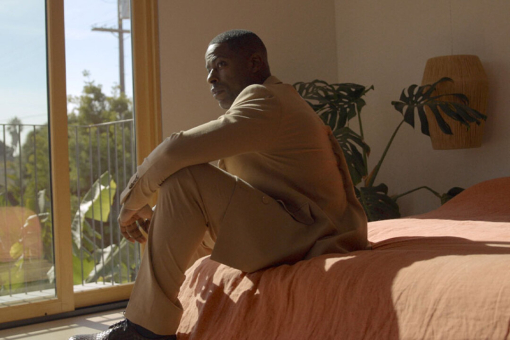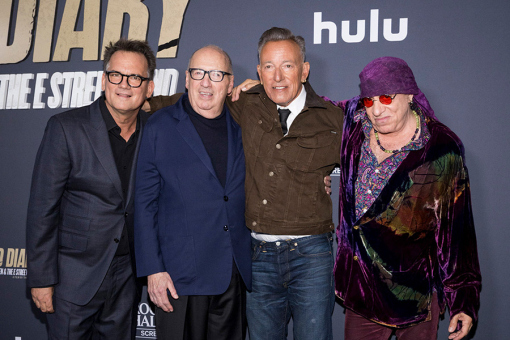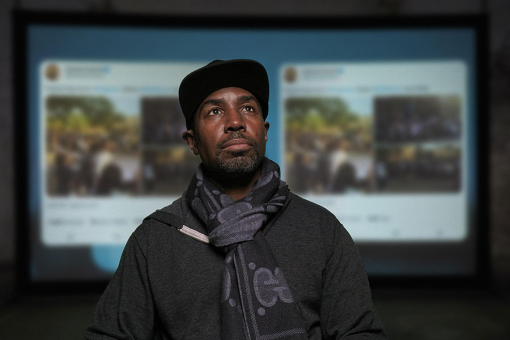Willis Wu has a serious case of ennui. The main character in Hulu's Interior Chinatown quietly trudges through life, feeling trapped and ignored.
It's as if he's fated to labor in the shadows, which is precisely what Willis (Jimmy O. Yang, Silicon Valley) is doing in the opening scene, which finds him tossing trash into an alley dumpster at night.
A waiter at his uncle's restaurant, Willis is also a waiter-turned-sleuth on the show-within-the-show, Black & White: Impossible Crimes Unit, an homage to Law & Order.
Although it may get confusing as to which reality Willis is in, the way the series is shot and lit guides viewers. The real world is grimier, grittier. The pretend procedural, despite being about murder, is lighter, sunnier.
Even viewers who have trouble with multiverses will connect to the Wu family, which has suffered the devastating loss of its older son. The family is shrouded in grief, and Willis is left craving recognition.
"I'm not saying I want someone to die," he says in the opening scene. "I'm saying if someone's already dead, I would like to be the person who finds the body."
Willis and his friend Fatty Choi (Ronny Chieng, Unfrosted) work at Golden Palace, which could be in any Chinatown. That was Charles Yu's intention. Yu, whose Interior Chinatown novel garnered the 2020 National Book Award for Fiction, has been thinking about Willis for 12 years. As the writer and showrunner, Yu drew from his parents' immigration stories to create this 10-episode limited series adaptation.
Emmy contributor Jacqueline Cutler spoke with Yu and director of photography Mike Berlucchi (Time Bandits) about how they brought this layered work to television and the visual choices they made to define these distinct but intersecting universes.
Let's begin by explaining the different worlds of Willis Wu.
Charles Yu: As we start out, Willis is not yet in a world that he wants to enter, which is the world of Black & White with these two cool cops. It seems more exciting. Willis's world is ordinary.
Detective Lana Lee (Chloe Bennet, Agents of S.H.I.E.L.D.) enters Willis's world and changes it. The air seems to shift around her, and she's shot, as the characters joke, as if she's in a shampoo commercial. Is she a guide?
CY: Lana is, to use a cinematic example, a little bit like Trinity in The Matrix. She's the one who is the key to him discovering that there's more out there, and that he can enter this new world if he wants to. I do think it's fair to be confused. The idea is to create these two worlds that are very distinct but to blur the separation between them throughout the course of the story.
The confusion, hopefully, that a viewer feels is actually a good thing for the story, at least at the beginning, because it's a reflection of Willis's own feeling. Willis himself is very conflicted. What is evident a little bit in the book, and hopefully will come across to viewers, is that in some ways, this world is not all in Willis's head.
How meta is Interior Chinatown?
CY: It is really meta. First, coming up with the idea of a background character who wants to be in the show, and then writing that book, took more than a couple of years to work out. Translating that book into a script, shooting the script, and getting to work with people like Mike and Taika [Waititi (What We Do in the Shadows), who directed the pilot] allowed us to tell a story where lighting is not only a feature of the world but also a key to distinguishing these two worlds.
It's a key to Willis's psychology. Mike can explain much better than I can about how we translated the very fuzzy, inarticulate feelings that I had. I would talk in emotion-speak to Mike, and Mike would turn it into technical stuff.
Mike, could you expand on how lighting helps tell this story? When he's in the TV show, there's a blue glow, like the light of someone's TV seen through a window. How does that fit?
Mike Berlucchi: The Black & White world we treated much cooler overall, trying to go back to that Law & Order aesthetic. That's very interesting that you noticed that blue feeling, like you are looking at someone's TV. That's actually very cool, and I'm happy you got that from it. It wasn't necessarily what was intended, but yeah, it's like this outside-looking-in thing.
So, when he's in Black & White, all is brighter. But when Willis is at home, in an SRO [single-room occupancy housing] in Chinatown, it's darker, yet somehow homier?
MB: Yes, the blue hue comes from the cooler colors in that world, versus Willis's world, with the SRO and all of that, where it's much warmer. The colors are inconsistent. There's a lot of very mixed lighting in there, but the Black & White world is just very polished, consistent.
That SRO felt like the real deal, with the bathroom down the hall. Was this a set, and what did you want to convey about this communal way of life?
CY: Our art department, led by Kate Bunch [English Teacher], designed an SRO that I really think captures those places. As a first-time showrunner, watching Kate and Mike collaborate was interesting. I didn't realize how much, at such an early stage, the production designer and the DP would be talking about color and what things would look like.
Giving that feeling of closeness, of tight quarters, of the density of the world, is something that I always imagined in my head and while writing the book, because of what real SROs are like, with all of the colors and textures of things stacked and piled on top of each other. It gives a sense of real life, which is the world where Willis lives, this kind of backstage world, as contrasted with the clean and much less crowded world of the cop show — at least as Willis perceives it at the beginning.
Chinatowns, especially in the rain, give off a surreal glow from the neon signs. Did that sort of otherworldliness inspire you visually?
MB: Very, very early on in preproduction, Kate Bunch and I went up to San Francisco's Chinatown. We flew in in the morning and stayed as late as we could. We just spent the day getting inspired. It had rained a little earlier in the day, which completely transformed things. It makes it so magical when you have light and reflections on the ground.
How does camerawork reflect the internal aspects of the story?
MB: We would do a lot of these objective angles, these wide angles that are high up in the corner so Willis is this small character, traversing the hallway of the SRO. Or we'd plant him in the background of a shot, making it more of an architectural frame and showing off the beauty of the Golden Palace — or lack of beauty, depending on how you look at it. But it's always about how we position him in the frame. When we're with him in the SRO, in his room, we're keeping things very tight and using wide angles to fill the frame with as much clutter as possible. And we would stay handheld with him, keeping it very intimate when we're in his room.
In the final episode, Lana says, "Whoever these Hulu fucks are, they're the ones controlling your story." Is this peak meta?
CY: Props to Hulu for letting us do that line. Thank you. This is all part of this season-long story about who's really controlling Willis's reality, and that's really the mystery. He starts by investigating what happened to his brother. I think it starts as Law & Order, and it ends as something more like The Twilight Zone or even The Matrix, where the mystery is actually much deeper than we thought it was.
Interior Chinatown is now streaming on Hulu.
This article originally appeared in emmy Magazine, issue #13, 2024, under the title "Light Switch."













